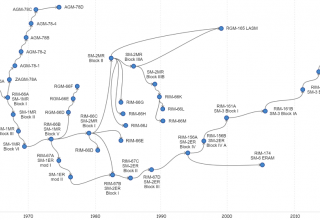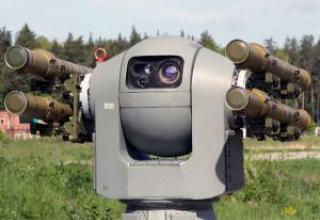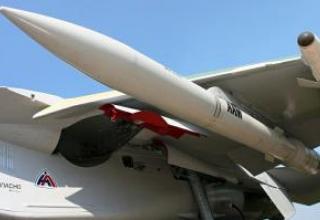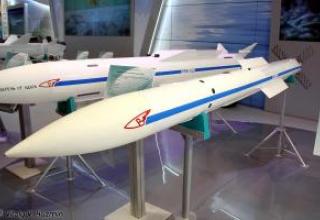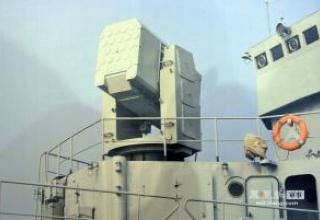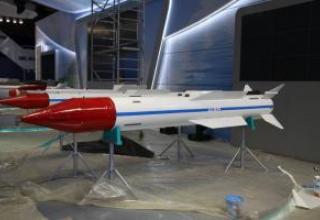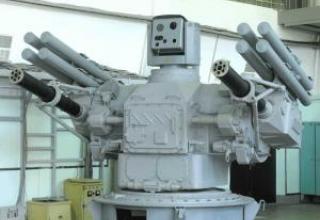Idra multi-purpose missile concept was developed by Italian company Selenia on request of Italian Air Force since 1987. With the beginning of flight tests at the end of 1990, the program was designated Aspide-Mk2.
The rocket is designed for use in air-to-air, ship-to-air and ground-to-air classes. In the Italian Air Force, it is considered as a weapon and support aircraft, competing with missiles such as AMRAAM (USA), Mica (France), Skyflash (UK); in the Navy - as an air defense missile in the LAMS (Local Area Missile System) for the frigate NATO NFR90, competing with missiles developed under the European program MSAM (Medium Surface-to-Air-Missile).
The Idra missile is considered the successor of the Italian Aspide-1a. Unlike it, however, it has the ability to engage group targets, has an extended range of CNS (7 km instead of 6) and an acceptable overload (40 instead of 35). The ability to engage group targets is provided by the radar CNS, the ground-based or ship-based vertical launch vehicle and the next-generation multifunction fire control system (FMS).
In terms of mass, size, installation characteristics as well as the elements of interface with IMS Idra missile can be used with the Aspide-1A rocket booster and thus can extend the life of the Spada and Albatros air defense systems.
Composition:
The guidance system of the new missile is combined: inertial on the middle section of the trajectory and with the radar CNS - on the final one.
This system can optionally operate in four modes:
- Inertial guidance combined with active radar CNS at the end of the trajectory;
- Inertial guidance, with or without target coordinates clarified in flight (or in combination with interference transmitter guidance);
- active homing on the entire flight path;
- passive homing at the end of the flight to a radio interference source.
The control system is based on a 32-bit MM/UYK-785 microprocessor, in the sMHIDAS data processing system using a multi-purpose control panel of Italian aircraft and EMPAR fire control radars from Marconi, Selenia and Thomson-CSF.
The Selenia radar CNS operates in pulsed Doppler mode in band I of frequencies. The transmitter is solid. The antenna is flat. The electronic protection system (Elom) is characterized by signal coding, frequency difference, suppression of the side blades of the directional pattern, high resolution, the ability to recognize targets against the background of both artificial interference and reflected from local objects. The missile is intended to use both an Italian inertial control system and a foreign design system.
The two-stage engine of the Idra missile with low smoky fuel can be re-started near the interception point (due to the reserved fuel part), increasing the missile's maneuverability at the target.
Typical Idra projectile engagement process: starting and accelerating within 3 seconds, flying on inertia with aerodynamic surface control, igniting the rest of the fuel at the command of the onboard VU in 1-1.5 seconds before the interception point. In this case, the missile acquires a speed of up to 900 m / s. Detonation of the missile charge is provided at an optimal distance from the target.
A variant of the rocket Idra extended range can be created by an additional section of the marching engine. The total length of the missile in this case is 4625 mm.
Characteristics:
| Range, km | 50 |
| Starter weight, kg | 220 |
| Length, mm | 3500 |
| Body diameter, mm | 203 |
| Wingspan, mm | 1000 |
| Weight of combat unit, kg | 35 |
Testing:
During the war with Iran, Iraq used HOT missiles, launching them from ground armored vehicles as well as helicopters. In the 1980s. "HOT was used in Lebanon by Syrians who destroyed several Israeli tanks such as Merkava. The complex was used by multinational forces during Operation Desert Storm.
Sources:
- Internationale Wehrrevue. 1987.-Vol.20,N9.-S.1247.

